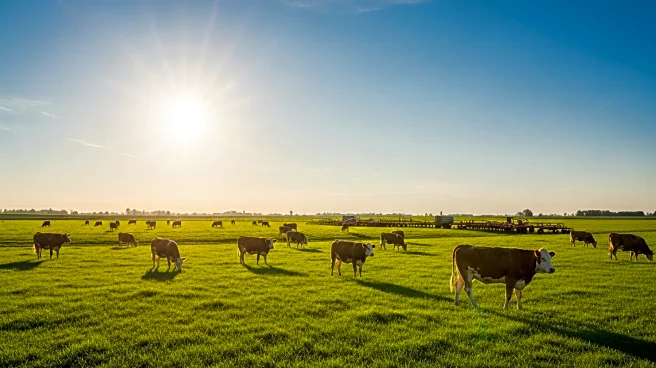What's Happening?
McDonald's has announced a significant investment of $200 million over the next seven years to support regenerative agriculture practices on cattle ranches across the United States. This initiative marks the company's largest investment in regenerative agriculture within the U.S. The program aims to promote techniques that conserve water, improve soil health, and reduce reliance on synthetic chemicals and fertilizers. McDonald's is collaborating with the National Fish and Wildlife Foundation, which will manage the distribution of competitive grants to organizations assisting ranchers in implementing these practices. The investment will cover ranches spanning 4 million acres in up to 38 states, with additional funding from suppliers such as Cargill, Golden State Foods, and Coca-Cola.
Why It's Important?
The investment by McDonald's underscores a growing trend among major corporations to support sustainable agricultural practices. Regenerative agriculture is seen as a vital approach to enhancing the resilience of food systems, particularly in the face of climate change and environmental degradation. By improving soil health and water conservation, these practices can increase the productivity and profitability of ranches, potentially leading to more sustainable beef production. This move could influence other companies to adopt similar strategies, thereby contributing to broader environmental and economic benefits. The initiative also reflects McDonald's commitment to safeguarding food systems for long-term vitality, which is crucial given its extensive reach in the U.S. market.
What's Next?
The National Fish and Wildlife Foundation plans to announce the first round of grant awards in January, which will kickstart the implementation of regenerative practices on participating ranches. As the program progresses, it is expected to foster collaboration among ranchers, environmental organizations, and corporate stakeholders. The success of this initiative could lead to expanded efforts in other agricultural sectors and regions, further promoting sustainable practices. Stakeholders will likely monitor the outcomes closely to assess the impact on ranch productivity and environmental health, potentially influencing future investments and policy decisions in the agricultural industry.











